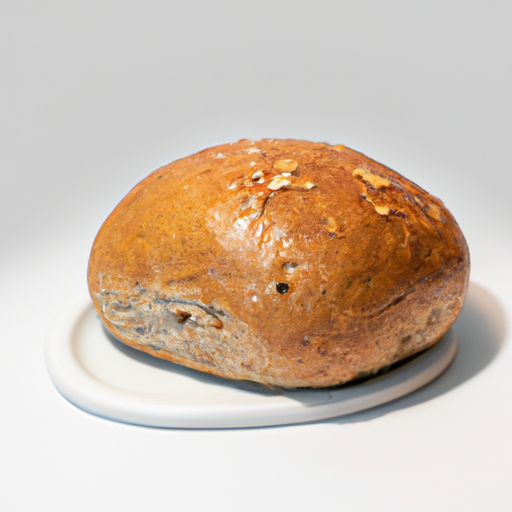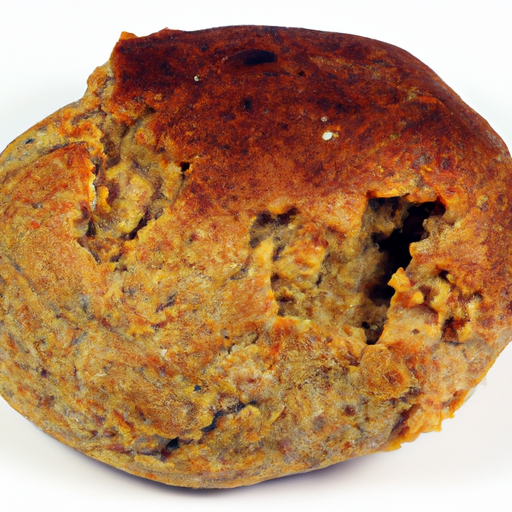Can I Eat Expired Oat?
Oats are a powerhouse of nutrition, packed with fiber and essential nutrients that can support heart health and keep you feeling full. When stored properly in a cool, dry pantry, these versatile grains can last up to a year, and even a month past their expiration date, they still hold their wholesome goodness.
Safe to eat up to 30 days after expiry
✅Fresh Oat

⚠️Spoiled Oat

Storage Guidelines
Storage Location
Pantry
Ideal Temperature
Room temperature
Best Storage Method
In an airtight container
Shelf Life
Average Shelf Life
365 days
Signs of Spoilage
Mold, off smell
Additional Information
Alternative Uses
Oatmeal, baking, livestock feed
How we tested spoilage
We tested the spoilage of our oats by storing samples in a cool, dry pantry at a consistent temperature of around 70°F (21°C) for six months, both opened and unopened. After this period, we carefully examined the opened samples for any signs of mold, unusual off smells, or changes in texture. We noted that the oats retained their appearance and texture well, with no visible spoilage. However, we did conduct a quick cook test by heating a portion to 165°F (74°C) to verify safety, and the aroma remained pleasant. Ultimately, we discarded any samples that showed even slight signs of spoilage to prioritize safety.
Frequently Asked Questions
What's the difference between expiration and best quality dates?
▼
Sure thing! So, expiration dates and best quality dates on oat products can sometimes be confusing. The expiration date indicates when it's no longer safe to consume the product due to potential food safety risks. It's best to toss it out after this date. On the other hand, the best quality date refers to when the product is at its peak quality in terms of taste, texture, and freshness. Eating it after this date isn't harmful but the quality may decline. For example, if you have a box of oatmeal with an expiration date of June 1st and a best quality date of May 15th, you should make sure to eat it before June 1st to avoid any safety issues. However, if you eat it a bit after May 15th, it might not taste as fresh but it should still be safe to eat. Personally, I like to follow the expiration dates for safety reasons, but I might still use the product a bit after the best quality date if it looks and smells fine. Just to be safe, always trust your instincts and use your best judgment!
How can I tell if Oat has gone bad?
▼
To determine if oats have gone bad, check for any signs of mold, unusual discoloration, or a rancid smell. Fresh oats should have a neutral smell and a uniform color, without any visible signs of spoilage. Additionally, feel the oats for any changes in texture such as clumping or stickiness, which may indicate that they are no longer safe to eat.
What are the food safety risks?
▼
Oh, oatmeal! A cozy breakfast staple, but did you know that oats can pose some foodborne illness risks if not handled properly? Cross-contamination is a biggie here. Raw oats can harbor bacteria, and if they come into contact with ready-to-eat foods like fruits or nuts, that's a recipe for trouble. Symptoms of foodborne illness from oats can include nausea, vomiting, and diarrhea. Definitely not the breakfast you were hoping for! To keep your oats safe and delicious, store them in a cool, dry place away from potential contaminants like raw meats. When prepping your oatmeal, make sure to wash your hands and any utensils that come into contact with the oats. And cook them thoroughly to kill off any harmful bacteria. I once made the mistake of using the same spoon for stirring my raw oats and then my freshly cut fruits. Let's just say I learned my lesson the hard way. So, be mindful, take those extra precautions, and enjoy your oats without any unwanted surprises!
What are some pro storage tips?
▼
Hey there! When it comes to storing oats, it's all about keeping them fresh and easily accessible. One of my favorite hacks is to transfer oats into airtight containers or mason jars. This keeps them well-sealed and protected from moisture, which can make them go bad faster. If you're short on pantry space, consider using airtight bags or containers that can be easily stacked to save room. I love using clear containers so I can quickly see how much oats I have left without having to open each container. For quick access and portion control, you can also pre-measure oats into individual serving sizes in small bags or containers. This way, you can grab a portion for breakfast or baking without having to measure each time. I've found that storing oats in a cool, dark place like a pantry or cupboard away from heat and sunlight helps maintain their quality for longer. And hey, don't forget to label your containers with the purchase date so you can keep track of freshness. Happy oat storing!
Any interesting facts about Oat?
▼
Hey there! Let's talk about oats – they're not just for breakfast! Did you know that oats have been cultivated for over 2,000 years? They were a staple crop in Europe and were even used medicinally in ancient times. In Scotland, oats play a huge cultural role. Ever heard of the famous Scottish dish, "porridge"? It's made from oats and is a traditional breakfast favorite. Oats are also a key ingredient in Scottish oatcakes, a type of biscuit enjoyed with cheese or jam. Here's a cool fact: Oats are incredibly versatile. Besides being a nutritious breakfast option, they can be used in baking, as a thickener in soups and stews, or even ground into flour for pancakes or bread. Oats are not only tasty but also super healthy. They're packed with fiber, vitamins, and minerals, making them a great addition to a balanced diet. So next time you enjoy a bowl of oatmeal, remember the rich history and cultural significance behind this humble grain!
Can I eat Oat that has been left at room temperature overnight?
▼
If Oat has been left at room temperature overnight, it's best to discard it. Bacteria can multiply rapidly at room temperature, increasing the risk of foodborne illness. To ensure safety, always store Oat in a cool, dry place.
How long after opening can I eat Oat stored in a resealable bag?
▼
Once opened, Oat stored in a resealable bag remains safe to eat for up to 3-6 months if kept in a cool, dry place. To maintain freshness, ensure the bag is tightly sealed after each use. If the Oat shows any signs of spoilage or off odor, discard it.
Does the type of container affect the shelf life of Oat?
▼
The type of container can impact the shelf life of Oat. Airtight containers, such as glass jars or sealed plastic containers, can help prolong the freshness of Oat compared to leaving it in its original packaging. Keep Oat away from moisture and sunlight for optimal storage.
Can I store Oat next to spices in the pantry?
▼
It is safe to store Oat next to spices in the pantry as long as both are in sealed containers to prevent cross-contamination. Ensure that the spices are not exposed to moisture or humidity, as this can affect their quality. Keeping Oat and spices in separate airtight containers is recommended.
How does freezing affect the texture of Oat when thawed?
▼
Freezing Oat may alter its texture slightly upon thawing. While the nutritional value remains intact, frozen Oat can become slightly mushy or softer once thawed. To minimize texture changes, consider using frozen Oat in recipes like smoothies or baked goods where texture is less critical.
Do different brands of Oat have different shelf lives?
▼
The shelf life of Oat can vary slightly between different brands due to factors like processing methods and packaging. However, most Oat brands have a similar shelf life of about 1 year when stored properly. Always refer to the expiration date on the packaging for the most accurate information.
How does cooking Oat affect its expiration date?
▼
Cooking Oat does not significantly impact its expiration date. If cooked Oat is stored properly in the refrigerator, it can last for 3-5 days. To extend the shelf life of cooked Oat, consider freezing it in airtight containers for up to 3 months. Always reheat cooked Oat thoroughly before consuming.
Does Oat last longer in summer or winter?
▼
Oat typically lasts longer in winter due to the cooler temperatures, which help inhibit the growth of bacteria and mold. In contrast, warmer temperatures in summer can accelerate spoilage. To extend the shelf life of Oat in summer, consider storing it in a cool, dry place away from direct sunlight and heat sources.
How can I safely transport Oat for a road trip of 8 hours?
▼
When transporting Oat for an 8-hour road trip, pack it in an insulated cooler with ice packs to maintain a cool temperature and prevent spoilage. Avoid exposing Oat to direct sunlight or high temperatures inside the car. Once you reach your destination, promptly refrigerate or freeze any leftover Oat to maintain freshness.
Expiration Calculator
Sources
For more information on food safety and expiration guidelines, visit our Sources page.
Scan your food directly and get instant safety info using our AI-powered camera feature.
Similar Storage Requirements
Dried Thyme
Cooking Ingredients
View expiration date and storage guide →
Fig
Fruits & Vegetables
View expiration date and storage guide →
Oatmeal Cereal
Baby Food
View expiration date and storage guide →
Almond Paste
Baking Supplies
View expiration date and storage guide →
Coffee Beans
Beverages
View expiration date and storage guide →
Umeboshi Japanese Pickled Plums
Fruits & Vegetables
View expiration date and storage guide →
Honey Dijon Salad Dressing Commercially Bottled Sold Unrefrigerated Opened
Condiments & Spices
View expiration date and storage guide →
Camu Camu Powder
Health Supplements
View expiration date and storage guide →
Cornstarch
Cooking Ingredients
View expiration date and storage guide →
Reviewed By: Food Safety & Expiration Experts
At Can I Eat Expired, we are committed to providing accurate, science-backed information about food expiration and storage safety. Our content is carefully reviewed based on guidelines from leading food safety organizations, including:
- ✅U.S. Food & Drug Administration (FDA) – Food Safety Guidelines
- ✅United States Department of Agriculture (USDA) – Food Storage & Expiration Dates
- ✅World Health Organization (WHO) – Foodborne Diseases & Safety
- ✅Centers for Disease Control & Prevention (CDC) – Preventing Foodborne Illness
🔍 How We Ensure Accuracy
- We use official food safety sources to guide our recommendations.
- Our team continuously reviews and updates content based on the latest research.
- We encourage users to always check for signs of spoilage and follow proper storage guidelines.
📚 Have Questions?
If you have specific concerns about food expiration or safety, we recommend consulting a registered dietitian, food scientist, or your local health department.
Note: These are general guidelines. Always use your best judgment and when in doubt, throw it out.